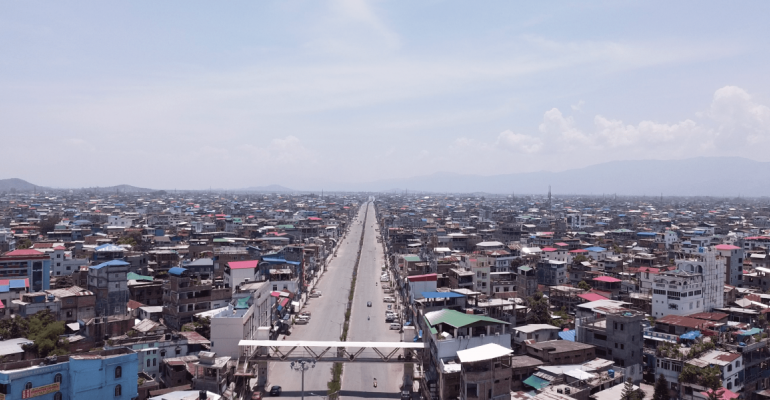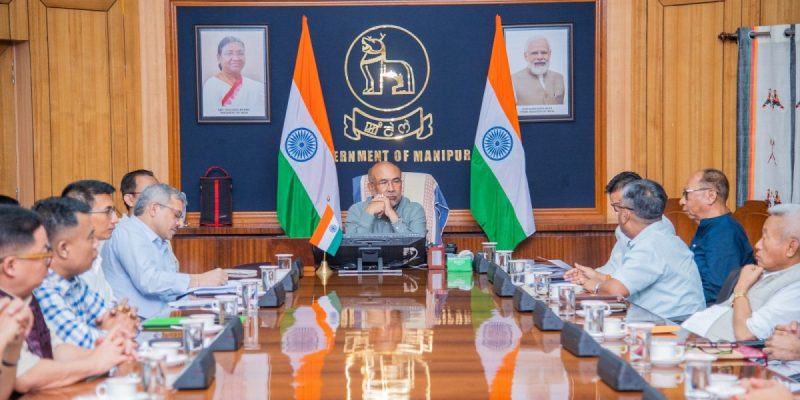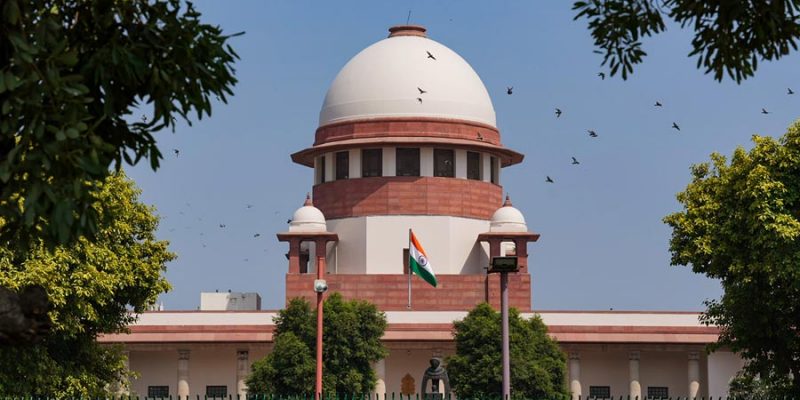Double-Engine: The Union and State Government Must Answer for Manipur

The violence in Manipur has continued for three months.
It is clear that there is state collusion and complicity in the violence.
This is not just an allegation or suspicion but an incontrovertible fact. There is also evidence that this attack on the Kuki-Zomi community has been pre-planned.
This is the conclusion of the top most security expert in the country, the executive director of Institute of Conflict Management.
And even more strange is that the Centre has not allowed a debate in Parliament on Article 355.
The Union government created the impression that it had invoked Article 355 of the Indian Constitution. This Article is an emergency provision which allows the Centre to intervene and safeguard a state against external aggression or internal disturbances. It states that the maintenance of law and order in a state falls under the jurisdiction of the Union government.
The provision is designed to ensure that the government can act swiftly and decisively in the event of any disturbance or threat to the peace and security of the country. But an RTI reply made it clear it had not applied the provision. So, the question is, why has the Union government not stepped in to stop the violence?
Reasons for continuing violence
What are the diabolical reasons behind the violence which has displaced more than 60,000 people? (Of them, some 40,000 are living in relief camps without basic amenities. Local organisations ran the relief camps and even where they did the conditions were abysmal.
Many of the Kukis who escaped to Mizoram are living in 35 relief camps. The Mizoram government requested a mere Rs 10 crore from the Centre – but has had no response.
The prime minister is silent and there is no explanation why even the home minister could not find a way to stop the violence.
Who is helped by the violence?
Then brings us back to the question: why has the violence been allowed to continue for so long? What objective does it fulfil?
The prime minister has not made any comprehensive statement on the Manipur violence and maintained a steady silence. The only thing the Centre has done is to ask the CBI to probe the case of rape and sexual assault of two Vaiphai women which went viral, but the women have gone to Supreme Court to say they do not want the CBI to probe.
There is little or no trust in the Union government. This too is unusual, considering it was the state police which handed over the women to a mob.
It is important not to get paralysed, after being overwhelmed by the accounts of individual acts of rape and murder. We must continue to seek the reasons for this complicity of the state, both the Centre and the state. The Chief of Defence Staff has clearly stated that the cause of the violence is not related to insurgency.
Origins of the violence
The roots of this violence do not lie in the history or even geography of Manipur but in contemporary political and economic developments.
A major feature of present day politics is the rise of Hindu majoritarianism. This is the first time Manipur is seeing an attack on religious buildings. The violence led to the destruction of 321 religious places, of which 249 were churches. In part it was a response to aggressive evangelising by the Christian missionaries and the threat perception by the Meitei vigilante group Arambai Tenggol which is not Hindu but Sanmahi, a pre-Hindu religion.
However, the state could have easily stopped this violence with the help of the police; Manipur has a police to people ratio much higher than the Indian average. But there was some reason why they chose not to.

Security forces in Manipur. Photo: Yaqut Ali/The Wire
The one thing that is common with the past conflicts is the issue of land and identity. But why this drive to evict the Kukis from their lands?
The chief minister, N. Biren Singh, has pointed out that in the recent government drive against illegal encroachments in forest areas, more Meiteis lost their land than did the Kukis. Media reports corroborate this to some extent.
During the government’s eviction drives carried out between October 24, 2015 and April 18, 2023, 413 families were removed from reserved forest areas; some of these forest areas fell within the hills surrounding Imphal Valley such as Langol. Of these, 280 families were from Meitei community (143 Meitei and 137 Meitei Pangal) while 59 were Kukis. During the drive, 38 Naga and 36 Nepali families also faced eviction.
However, the Kuki claim that their community has been the main target of the evictions is borne out by the fact that a forest department notification in November 2022 derecognised 38 villages in the Churachandpur and Noney districts, claiming they fell within the Churachandpur-Khoupum protected forest. The notification said that the permission for settlement was granted to the villages by an officer who was not qualified to do so. In the 1970s, these 38 villages were excluded from protected forests by the forest settlement officer.
The Kuki groups have pointed out that under Article 371C of the Constitution, which is specifically applicable to Manipur, the state government cannot arbitrarily amend the Indian Forest Act, 1927 in the hill areas of the state. Article 371C provides for constitution of a committee of MLAs, including those from the hill areas, for the modifications to be made in the state rules.
But the Union government has backed Biren Singh’s stand.
Also read: Silence Over Manipur Lays Bare the Crisis of Indian Identity
During a recent visit to Manipur, Bhupender Yadav, Union minister of environment, forest and climate change, asserted that the 1927 Forest Act became a state subject after Independence though after the 1976 amendment, forest land came under the jurisdiction of both the state and Union governments. The Union minister claimed that the state government retains ownership of the forest and was solely responsible for protecting reserved and protected forest land.
The timing of these evictions coincided with the prime minister’s announcement of a National Mission on Edible Oil-Oil Palm (NMEO-OP), with an investment of over Rs 11,000 crore for a five-year period. NMEO-OP is a new Centrally sponsored scheme under which it is proposes to add an additional 6.5 lakh hectares for palm oil production by 2025-26.
It will involve raising the area under oil palm cultivation to 10 lakh hectares by 2025-26 and 16.7 lakh hectares by 2029-30.
The special emphasis of the scheme will be in India’s North-Eastern (NE) states and the Andaman and Nicobar Islands, due to the conducive weather conditions in the regions. Prime Minister Narendra Modi had announced the palm oil project on his visit to Imphal in January 2022.
The Manipur Action Programme for the first hundred days released in March 2022 by N. Biren Singh includes at Point 97 holding a high-level seminar on the promotion of palm oil.
Environmental groups have pointed out that the impact on tribal societies would be disastrous. The experience in countries of southeast Asia and in neighbouring Mizoram has shown that oil palm is a water-guzzling, monoculture crop with a long gestation period unsuitable for small farmers, and the land productivity for palm oil is higher than for oilseeds, which create apprehension for more land to be given for oil palm cultivation. It detaches tribal people from their land and identity and causes havoc in the social fabric of society.
More to the violence than meets the eye?
Does it mean only violence of the kind we witnessed can force the Kuki-Zomi group of tribes to leave their lands? Did they have to be demonised as narco-terrorists and illegal migrants in order to force them to leave their homes, their villages?
Jinine Laishramcha, writing in Frontier Manipur, talks about why this project will be disastrous for Manipur: “Modi’s proposal will rub salt into the wound because the palm-oil plantation will accelerate drying up of the water-sources sooner than expected, pushing Manipur to a water scarcity and a water stress zone. Modi is ignoring the already deteriorated environmental reality in the region, he has brought up palm-oil on the spotlight. This is a contrary to the cordial policy and work for fulfilling the water supply for irrigation and household needs.”
Mizoram has already planted palm trees on about 29,000 hectares as the biggest producer in the Northeast. According to C. Zohmingsangi from Mizoram University, the palm is a highly water-consuming crop with each plant needing about 300 litres of water per day. About 45,000 litres of water per hectare every day is also a significant threat to soil fertility.
Speaking to Frontier Manipur, M.S. Khaidem, consultant Oil Palm Mission Manipur, said the Union cabinet on August 18, 2021 has approved the launch of the NMEO-OP as a new centrally-sponsored scheme with an outlay of Rs 11,040 crore for a five-year period.
Out of Rs 11,040 crore outlay, Rs 8,844 crore will be the share of the Union government and Rs 2,196 crore will be the share of states. The focus of the programme will be to increase area and productivity of oilseeds and palm oil, he added.
Touting the scheme as farmer-friendly, Khaidem revealed that the Assessment Committee, Ministry of Agriculture, GOI has identified 66,652 hectares in six districts of Manipur as potential areas for oil palm cultivation.
The six districts are Imphal West (14,516 hectares), Thoubal (18,475 hectares), Bishnupur (10,389 hectares), Churchandpur (11,662 hectares), Chandel (6,803 hectares) and Ukhrul (4,808 hectares).
Nothing was said how the Mission intended to get the people to give their ancestral lands for this project. The violence in Manipur has ensured that the communities in Manipur will not be able to come together and fight for their land and identity together against big corporations; or can they?
It will require that the people give up identity politics and evolve a politics which will bring them together to fight for a future Manipur which is green and beautiful.
Nandita Haksar is a human rights lawyer and award-winning author.







